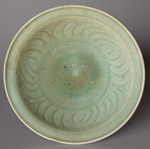
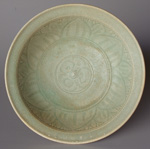
| Discovering Asia's ceramic development |
 |
 |
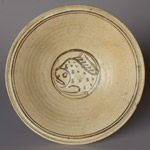 |
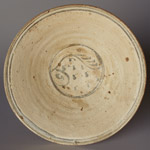 |
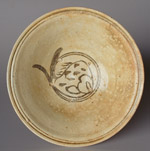 |
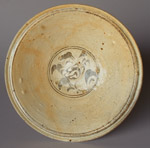 |
This wreck was discovered in 63 metres of water, 23 nautical miles from the coast. Again, only the surface of the site has been investigated, with a number of ceramic artefacts raised. The ship may have exceeded 30 metres in length with a beam of 8 metres, making her one of the largest wooden wrecks discovered in the South China Sea. She was of 'South China Sea' type; hull planks and transverse bulkheads were joined with wooden dowels.
Since discovery in 1996, fishing trawlers have destroyed much of the ship's structure and pottery.
The ceramics on site at discovery are estimated to have numbered 100,000 pieces, fifteen times the volume on the Turiang. These are estimated to be 40% Chinese, 40% celadon from Sisatchanalai, and 20% underglaze ware from Sukhothai.
The volume from Sukhothai, taken in conjunction with the Turiang cargo, is notable. No Sukhothai ware appears on the Nanyang site, but it was still in production at the later date of the Longquan wreck. Other archaeological sites had suggested that Sukhothai exported little compared to Sisatchanalai; the Turiang and Longquan wrecks suggest that Sukhothai in the early years was a significant exporter.
The Sukhothai fish and flower plates on the Longquan site, such as those on the right, are slightly larger than their counterparts from the Turiang, but the clay and slip are the same, and motifs are similar.
Sisatchanalai celadon plates on the Longquan, such as those at top left, have similar decoration to those on the Nanyang. This suggests little stylistic development at Sisatchanalai in the interval. However, production technique had improved: few spur disc scars are found on celadons from the Longquan wreck, showing that most were now fired on individual tubular supports.
The upright Sisatchanalai pieces on this wreck are more elaborately decorated; an example is the bottle vase shown earlier.
The glaze on Sisatchanalai celadon from this site has a distinctive blue tinge, not seen on pieces from the Nanyang or Royal Nanhai sites. (Colours in photographs are not always reliable, unfortunately.) Glaze is typically thick and matte, the best of its kind. Some of the Chinese celadon items on the wreck, such as the jar shown earlier, have a similar glaze.
 |
 |
 See similar plate from the Turiang, and discussion in the Turiang report, explaining the distinctive features. |
Chinese celadon and white-ware was also plentiful. Chinese celadon plates such as that on the right are of the same type as a group from the earlier Turiang cargo. This indicates that the Chinese kilns made the same type of celadon during the entire start-up period at Sisatchanalai. Sisatchanalai style was evolving, while Chinese style was static.
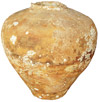
 A
large storage jar from Suphanburi found on the Longquan, with elaborate
stamped decorations on the shoulder, is identical to those seen on the Nanyang
site, and to the broken
neck of a very large jar on the Turiang. Capacity is about 260 litres.
A
large storage jar from Suphanburi found on the Longquan, with elaborate
stamped decorations on the shoulder, is identical to those seen on the Nanyang
site, and to the broken
neck of a very large jar on the Turiang. Capacity is about 260 litres.
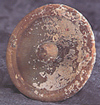
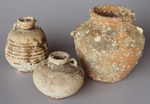 Storage-jar
lids of the type shown on the left, with curved convex base and a lotus bud
handle recessed inside, are common on wrecks in the South China Sea, but of
unknown origin. No such items have been found at the Sukhothai or Sisatchanalai
kiln sites.
Storage-jar
lids of the type shown on the left, with curved convex base and a lotus bud
handle recessed inside, are common on wrecks in the South China Sea, but of
unknown origin. No such items have been found at the Sukhothai or Sisatchanalai
kiln sites.
| Exhibition index |